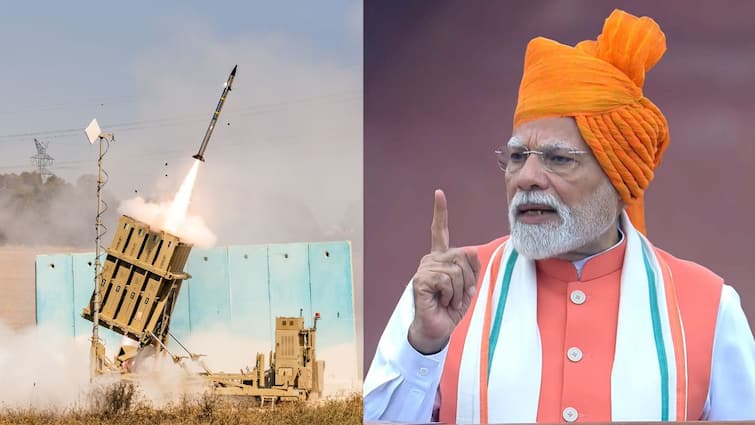India is set to develop a powerful, multi-layered defence network named ‘Sudarshan Chakra’, designed to safeguard the nation’s skies and critical infrastructure from missile strikes, aerial attacks, and cyber threats.
Announced by Prime Minister Narendra Modi on Friday, the system will integrate advanced surveillance, physical protection, and cyber-defence capabilities, drawing comparisons with Israel’s Iron Dome and the United States’ proposed Golden Dome, reported NDTV.
While India already operates the Integrated Air Command and Control System (IACCS) — which proved its effectiveness during Operation Sindoor by neutralising Pakistan’s missile attempts for nearly 100 hours — the Sudarshan Chakra aims to offer a stronger, more comprehensive shield. It takes inspiration from Hindu mythology, where Lord Krishna used the Sudarshan Chakra to protect Arjuna in battle.
A Shield Beyond Missiles
PM Modi, in his Independence Day address, said, “By 2035, I want to expand, strengthen, and modernise this shield… the entire system should be researched, developed, and manufactured in India.” The vision includes precision counterstrike capability and protection against cyberattacks, such as hacking and phishing, in addition to intercepting physical threats.
Citing sources, the news organisation reported that the project will be a collaborative effort between India’s leading defence research institutions, the armed forces, and private sector innovators. This aligns with the government’s ‘Aatmanirbhar Bharat’ push for self-reliance, especially in strategic and defence sectors.
The urgency for an enhanced shield stems from recent security challenges. In April, a terror attack in Pahalgam was followed by Pakistan’s failed attempts in May to target Indian military and civilian infrastructure. For over four days, India’s air defences, led by the IACCS, ensured air superiority by integrating the Army, Air Force, and Navy’s systems into a unified command that tracked and neutralised threats in real time.
This experience reinforced the need for layered protection over essential services — from power grids and communications networks to food supply chains and hospitals — all of which are high-priority enemy targets.
Global Context: Iron Dome and Beyond
India’s Sudarshan Chakra will join a select group of advanced air-defence systems worldwide. Israel’s Iron Dome, operational since 2011, has intercepted thousands of rockets, often with a success rate close to 90 per cent. In the US, President Donald Trump has proposed a $175 billion ‘Golden Dome’ to counter next-generation missile threats from land, sea, and space.
Russia relies on the A-135 and the formidable S-400, three squadrons of which India already operates. China deploys the HQ-9 system, also exported to several countries. Taiwan’s Sky Bow series and Japan’s PAC-3 interceptors further illustrate the growing global emphasis on missile defence as geopolitical tensions rise.
India’s Path Forward
The Sudarshan Chakra will likely incorporate IACCS as its backbone, enhanced with the Army’s Akashteer network and future indigenous technologies. With a development timeline stretching to 2035, the system aims not just to deter attacks but to ensure that, in PM Modi’s words, “Every citizen must feel protected.”
As global conflicts highlight the strategic value of air-defence systems, India’s new shield represents both a technological leap and a statement of self-reliance in protecting its skies.



